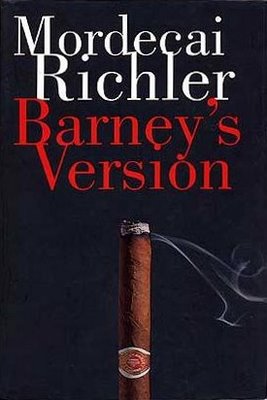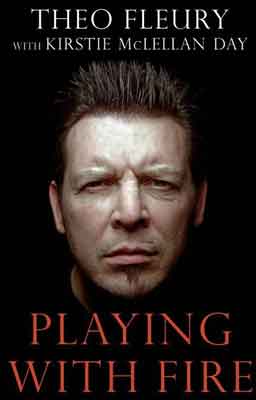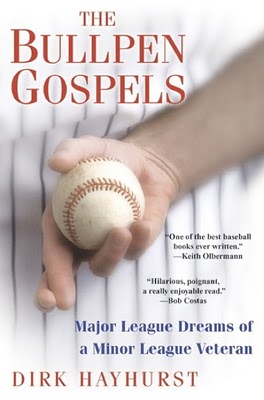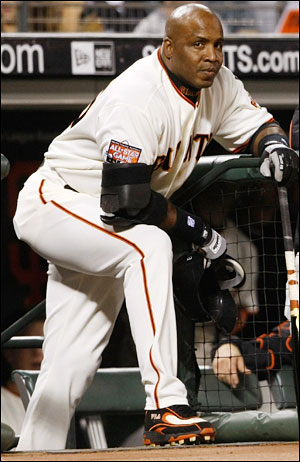 Barney’s Version accomplishes a feat that most Canadian literature can’t: it transcends its genre and stands on its own as an enjoyable read.
Barney’s Version accomplishes a feat that most Canadian literature can’t: it transcends its genre and stands on its own as an enjoyable read.
It’s a rare trick for a Canadian author, but Mordecai Richler is one of the greats. Barney’s Version is an enthralling and entertaining book that sheds so many of the conventions that other Canadian authors seem to love.
Don’t get me wrong. I enjoy CanLit. As a Canadian Studies major in my undergraduate years at the University of Toronto I’ve read my fair share of Canadian fiction. Probably your fair share too. But what should simply be a geographic category has built up an almost immobilizing amount of clichés that detracts from what should be a vibrant literary scene.
Seriously, most CanLit should come with a check list. Small, rural town with a main street of boarded up store fronts. A dark family secret, preferably involving sexual deviancy. Backhanded compliments towards the British and Americans that have a hint of jealousy. Rueful musings about life and history throughout the story.
Sometimes these characteristics are handled with aplomb, like Robertson Davies’ Fifth Business, but more often than not they create a kind of narrative rust that slows the plots of a lot of Canadian fiction.
However, Richler’s Bildungsroman/murder mystery/pseudo memoir as told by Barney Panofsky – and annotated by his son Michael – eschews most of these conventions. It even mocks them in the form of Terry McIvor, the elder Panofsky’s nemesis.
This self-awareness makes this the best book of Richler’s career.
Barney’s Version is set in 1995, as Quebec is preparing for its referendum on sovereignty. Barney, the main narrator, is coming to grips with the disappearance of the Montreal he knew and loved as well as his own personal decline as his body and memory begin to fail him.
The memoir is both a reaction to the unravelling of the world around him as well as a response to the sharp criticisms in McIvor’s autobiography and a final attempt at clearing his name in the disappearance – and probable murder – of his best friend, Boogie Moscovitch.
Planted firmly in the Richlerverse, with characters from earlier novels like the Apprenticeship of Duddy Kravitz, Saint Urbain’s Horseman and Solomon Gursky Was Here appearing throughout, Barney’s Version is Richler’s masterpiece of narrative storytelling and character development.
What’s most impressive is that the book is incredibly clever without ever getting showy or cute. Richler’s sharp use of an unreliable narrator – arguably two depending on how much faith you want to place in Michael Panofsky’s footnotes – is sharp and really stretches out the murder mystery until the very last page of the book.
Barney’s Version is well worth checking out, whether you’re familiar with CanLit or not. It is Mordecai Richler at the top of his game, pushing the narrative envelope while breaking new ground for a Canadian author, making him a singular literary figure in Canadian culture.
 Theo Fleury’s autobiography Playing with Fire is as direct and hard hitting as his play was on the ice.
Theo Fleury’s autobiography Playing with Fire is as direct and hard hitting as his play was on the ice.
That shouldn’t surprise anyone who followed the National Hockey League in the 1990s. Fleury was known as much for his energetic style and dynamic playing-making ability as his knack for pissing people off and getting in to trouble both in the arena and in real life.
Playing with Fire is Fleury’s memoir and confessional where he brings every imaginable skeleton out of his closet for all to see.
It’s a dark, often depressing look at his life on and off the ice. The turning point of the book comes early, when Fleury attends Andy Murray’s hockey camp and meets the scout and junior hockey coach Graham James, infamous for being convicted of the molestation of NHLer Sheldon Kennedy.
Of course, when the 13-year-old Fleury attended the camp, James’ dark second life wasn’t public knowledge and, according to the book, the vulnerable kid from Russel, Manitoba soon fell victim along with his friend Kennedy.
This revelation is what grabbed all the headlines when Playing with Fire was first published in 2009 and it is the central issue of the entire autobiography. All of Fleury’s behaviour afterwards is a reaction to the alleged abuse, either to distract himself from the guilt and pain of James’ assault or because he’s lashing out in anger.
Playing with Fire therefore serves as Fleury’s confessional, as he tries to explain his behaviour for most of his adult life and also tries to apologize to the many people he hurt or wronged, including teammates like Craig Conroy and Robyn Regher but especially his children Josh, Beaux and Tatym.
In many respects, reading Playing with Fire reminded me of professional wrestler Bret Hart’s autobiography Hitman. Both are athletes with deep connections to Alberta and Calgary, both are known for their incredible skills and both have a variety of personal problems stemming from abuses suffered while they were kids.
However, there are still differences. Hart is undoubtedly the better writer, but Fleury is the more genuine author. Hart is shockingly cavalier about the sex, drugs and violence in his professional and personal life, while Fleury is remorseful and regrets most of his behaviour.
Although this makes Playing with Fire less entertaining than Hitman, it’s also more emotionally fulfilling. The lows may be lower in Fleury’s narrative, but the highs are also higher.
Hart comes across as a bitter old man by the end of his book, while Fleury is clearly a happier, healthier person hoping to give back to society through his book, public speaking and charitable works.
Playing with Fire is definitely worth a read. Not just for hockey fans who want to read all about Theo Fleury’s wild stories, but for its value as a cautionary tale for any parents considering getting their child involved in amateur hockey.
 The Book of Basketball seemed like the perfect book for me, a natural fit.
The Book of Basketball seemed like the perfect book for me, a natural fit.
But Bill Simmons’ magnum opus, although entertaining and somewhat informative, fell short of my expectations.
You see, like most Canadians, I don’t know a lot about basketball. Sure, I watch maybe a game per week, I know the big name players and I certainly respect their athleticism and the skill necessary to play in the National Basketball Association.
But that level of interest pales in comparison to my obsession with hockey. That’s just the sad truth: In Canada, basketball always plays second fiddle to hockey. From an early age we’re all ingrained with an understanding of hockey that fuels our fascination.
It’s hard for any sport, especially one that runs at roughly the same time as the National Hockey League, to gain any kind of popular traction amongst Canadians.
What it boils down to for me is this: if you gave me a TV with only two channels, one broadcasting the classic 1986 NBA Finals with Magic Johnson’s Los Angeles Lakers facing Larry Bird’s Boston Celtics and the other showing a pre-2004 lockout game between the New Jersey Devils and Minnesota Wild, I’d probably end up watching the hockey.
However, I’m always trying to broaden my horizons, especially when it comes to sports and writing, and so I want to expand my basketball knowledge base.
Further, Simmons has always impressed me as an imaginative writer who can inform and amuse. Anyone who’s read his blog or followed him on Twitter knows he has a deep and abiding passion for basketball, so it seemed like reading his tome would be the perfect way to familiarize myself with the game.
There’s no denying that I learned a lot from Simmons’ 736 page treatise on every imaginable detail of professional basketball. His meticulously researched book does a lot to explain the evolving styles of play as well as the different personalities that have made up the NBA and American Basketball Association.
His lengthy footnotes and parenthetical asides made me laugh out loud and his pop-culture references are always on point. He’s got a gift for keeping sections that would otherwise be deathly boring fun and fresh. Unfortunately, they also add about an extra 100 pages to an already lengthy book.
That’s just one symptom of this book’s fatal flaw: it is poorly edited. Simmons should’ve been reined in to try and keep the book and more manageable length.
Further, a more consistent naming protocol should have been used. Player’s first names, last names and nicknames are used interchangeably from paragraph to paragraph, sometimes sentence to sentence. Although it can lead to some echoes in the writing, sticking to a standard would have lowered the word count - and in a book this big that could end up cutting some pages – and would have made the book more accessible.
This is where the book ultimately failed me.
As a survey of the history and players of professional basketball, the Book of Basketball seemed like the ideal entryway for a novice fan trying to learn about the sport. But it seems as though Simmons never really decided who his target audience was going to be, and so his narrative swings from being explanatory and appropriate for the new fan, to detailed and filled with in jokes only a long-time NBA fan would get.
Writing a book for the sophisticated fan is fine, but it should be advertised as such and be consistent in its level of accessibility. Unfortunately, the Book of Basketball is all over the map in comprehension, making it a frustrating read.
Bill Simmons’ Book of Basketball is funny and smart, but could’ve used a more firm editorial hand to rein in some of the author’s lengthier footnotes and asides to make a slightly more concise book that is accessible for all readers.
 Halfway through Dirk Hayhurst’s Bullpen Gospels it occurred to me that I was reading one of the best books on baseball, ever.
Halfway through Dirk Hayhurst’s Bullpen Gospels it occurred to me that I was reading one of the best books on baseball, ever.
That’s some strong talk, particularly for someone who hasn’t read the entire baseball canon. But I’m getting there - just about every other book I read is about baseball.
I’ve devoured Jim Bouton’s Ball Four more than five times, I loved John Feinstein’s Living on the Black and Michael Lewis’ Moneyball. Also, as fans of this blog know, I’ve reviewed the graphic novel Satchel Paige:Striking Out Jim Crow as well as Sports Illustrated’s Great Baseball Writing.
The Bullpen Gospels slot in right above all of those, including Ball Four, my previous titleholder.
They’re comparable books too. Both are written by professional baseball players who find themselves pitching long relief in a bullpen full of odd characters. Yes, Bouton was an established major leaguer trying to master the knuckleball while Hayhurst, at that point, was a career minor leaguer in the San Diego Padres organization, but they’re still pretty similar books.
Bouton’s book is infamous for exposing the real lives of baseball heroes like Carl Yastrzemski and Mickey Mantle at a time when they were idolized by most fans. The aging Seattle Pilots reliever took a lot of heat for the book, with many people saying Bouton was a gloryhound. I don’t agree with that sentiment, but it certainly reads like an expose.
Love it or hate it, Ball Four is a hilarious and insightful read. But, by contrast, the Bullpen Gospels is a much more genuine and sensitive story.
Starting with Hayhurst’s truly dire home life with an unbalanced grandmother and a fractured family crippled not by one, but two, alcoholics you immediately feel for the young reliever. When he moves on to spring training and the minor leagues you can’t help but appreciate his sense of humour.
Perhaps the most noticeable difference between Hayhurst and Bouton is that the former rarely criticizes his teammates or the Padres’ executives. On the few occasions when he does speak poorly of someone, it is a reasonable and measured critique, and he shies away from dropping big names for the sake of glamour.
The only person Hayhurst is really hard on is himself.
Gospels is a quick read that makes its way through an entire baseball season, with a truly joyous ending. It also imparts a better understanding of what life in the minors is like for aspiring ballplayers. Hayhurst is an effortless and charming writer. He’s likeable and always sincere in his beliefs.
I’d recommend this book to anyone, particularly as a companion to Jim Bouton’s Ball Four.
 I have wanted to read this book since it first came out in 2007. I’ve waited in anticipation for three years, and it was definitely worth the wait.
I have wanted to read this book since it first came out in 2007. I’ve waited in anticipation for three years, and it was definitely worth the wait.
After all, it is Sports Illustrated’s Great Baseball Writing. A volume of the best baseball writing from arguably North America’s best sports magazine between 1954 and 2004. Of course it’s going to be good.
“It’s a measure of the quality of this collection that the weakest piece in it is by Robert Frost;” says Michael Lewis of Moneyball fame in the book’s introduction. “It’s a measure of its honesty that the editors left out pieces by William Saroyan and Ted Williams in favour of better ones by writers you may never have heard of.”
The content really is fantastic. Leigh Montville writes about the last days of old Tiger Stadium in Detroit. The mystery of Billy Martin is tackled by Frank DeFord. Peter Gammons talks about the fans of Boston’s love and support of Bill Buckner after his disastrous misplay in Game 6 of the 1986 World Series.
On and on the book explores every corner of baseball, from famous names like Mickey Mantle and Stan Musial to the magic of a triple to a Japanese-American revolutionizing the way that the game is played in Hiroshima, a city devastated by the Second World War.
Of course, it’s still subject to the great Achilles’ Heel of its weekly magazine source: some of these articles get dated, and fast.
For example, right now, there is a recent Sports Illustrated – cover-dated May 17 - sitting on my coffee table with Shaquille O’Neal staring at the reader with the headline “Good old Shaq: Can He Deliver a Ring to the King?”. Pretty awkward when LeBron James, Shaq and the rest of the Cleveland Cavaliers were eliminated from the National Basketball Association playoffs on May 14.
That kind of automatic obsolescence is the nature of a weekly publication schedule, but it makes for some uncomfortable reading in a book that collects those articles years later.
Chapters like Steven Cannella’s “Against the Grain” (March 25, 2002) don’t hold up well as it explains the influence of the maple bat and how “the ball jumped off it with more zip”.
Maybe maple bats do help batters. Maybe Cannella was reporting on what he felt was a real factor in the power surge. I’m not sure. Unfortunately, the piece comes across as a ham-handed attempt at explaining the steroid-fuelled surge in home runs in the late 1990s and early 2000s.
Reading Tampa Bay Devil Rays catcher John Flaherty say that “People talk about the ball being juiced. I’ve been saying for a while now that the wood is so much better than it was when I came up,” makes me cringe because I can’t help but think that the ball and bat have nothing to do with the rise of the long ball.

Every time Barry Bonds is mentioned in this book awkwardness ensues.
Similarly, Tom Verducci’s “600 and Counting” (August 19, 2002) looks at the mysterious spike in Barry Bonds’ home run numbers. Verducci, one of the best writers in baseball, breaks Bonds’ career into three stages with the final level being explained away quickly:
“[I]n Stage 3 Bonds has crept closer to home plate, enabling him to pull pitches on the outside half of the plate with power rather than hitting line drives to the leftfield gap.”
Sure, Bonds probably did adjust his batting stance at different times in his career, but there’s also a lot of circumstantial evidence that suggests that he used performance enhancing drugs during that same period. The Steroid Era has left me so cynical that I can’t help but believe the latter over the former and that Verducci was naive.
Then again, that’s probably the point. After all, this is a book dedicated to the entirety of the baseball experience from 1954 to 2004. The ignorance of fans and sports journalists about steroids between the mid-1990s and mid-2000s is certainly a part of that history.
All in all, Sports Illustrated’s Great Baseball Writing is an excellent read. Just be prepared for some rather uncomfortable articles that seem ridiculous in light of the Mitchell Report and other investigations into steroid use in professional baseball. Some of the articles just do not hold up in the face of more cynical examination.

Unfortunately, I could not find an image that combined books and mixed martial arts. You really don't want to Google Image search that either.
In the grand spirit of Twitter’s Follow Friday I figured I’d shed some light on three blogs maintained by close friends.
The Can-Lit Project
Written by my girlfriend Katy and her sister Tory, the Can-Lit project is a series of book reviews and essays about Canadian literature.
It all began when Katy decided that she wasn’t familiar with the Canadian canon, so she and her sister dedicated themselves to reading as many books from this great country of ours as is possible. The result has been intriguing, with both of them exploring classics of the genre as well as some titles that are less popular.
In their eight months of blogging they've put up 43 reviews of Canadian books. Most are fiction, but some are non-fiction.
This may be the Canadian studies graduate in me, but I think this is a very worthy pursuit. In particular, I’ve enjoyed the debates over titles like Life of Pi by Yann Martel. I’ve never read the novel myself, but I miss this kind of heated discussion from undergrad and it makes me want to read the book so I can weigh in as well.
If anything, this blog shames me into being better read and also reading more high quality books. One of my favourite blogs to read and not just for obvious personal reasons.
The Writer’s Pet
Speaking of debates from undergrad, my friend Lija also maintains a literary blog called the Writer’s Pet. Although we used to talk about CanLit in our glory days at the University of Toronto, she’s now moved on to sunny London, England where she continues to toil in the writing game.
Her blog and Twitter feed revolve around literary news and reviews and she occasionally posts interviews with authors like Gavin James Bower, Anna Lawrence Pietroni or Marina Endicott.
It’s a great website to check in on regularly since Lija always has something interesting going on, whether it be a new review or a discussion on unorthodox bookmarks.
Victor Bachmann
My girlfriend’s brother-in-law (the husband of Tory, co-writer of the Can-Lit Project), is a professional mixed martial artist who fights out of Edmonton. He recently started a blog to record his planning and training for a tournament at the end of April that will feature fighters from across Canada in an elimination tournament, much like the original Ultimate Fighting Championship.
There’s only a few posts so far, but that handful has been enlightening. Victor’s talked about his entrance into the sport, his experience fighting at The Fight Club 10: High Octane and coming up with a strategy for his next bout.
It’s a good read for anyone interested in seeing what it takes to be a high-calibre professional athlete or for any fans of MMA.
 The Book of Basketball seemed like the perfect book for me, a natural fit.
The Book of Basketball seemed like the perfect book for me, a natural fit. Halfway through Dirk Hayhurst’s Bullpen Gospels it occurred to me that I was reading one of the best books on baseball, ever.
Halfway through Dirk Hayhurst’s Bullpen Gospels it occurred to me that I was reading one of the best books on baseball, ever.



